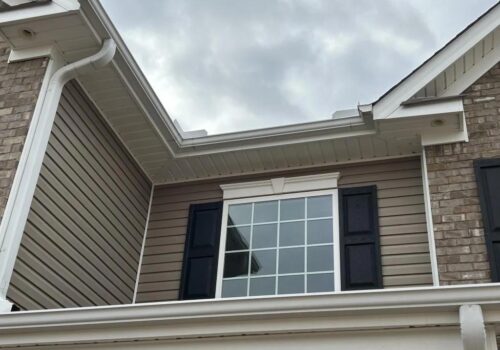Title: The Evolution and Importance of Air Conditioning Systems
Introduction:
Air conditioning systems have become an integral part of our daily lives, providing comfort and improved indoor air quality. This article will explore the definition, purpose, history, components, working principle, types, energy efficiency, maintenance, troubleshooting, and future advancements of air conditioning systems.
I. Introduction to Air Conditioning System
A. Definition and Purpose of Air Conditioning:
Air conditioning is the process of altering the properties of indoor air to create a more comfortable and conducive environment. It involves regulating temperature, humidity, and air quality.
B. Brief History and Development of Air Conditioning Technology:
The concept of air conditioning dates back to ancient civilizations, but the technology has advanced significantly over the years. From the invention of cooling devices to the development of refrigeration cycles, the evolution of air conditioning has revolutionized modern living.
II. Components of an Air Conditioning System
An air conditioning system consists of several crucial components that work together to achieve efficient and effective cooling.
A. Compressor:
The compressor is the heart of the air conditioning system, responsible for compressing the refrigerant gas, raising its temperature, and increasing its pressure.
B. Condenser:
The condenser facilitates the transfer of heat from the refrigerant to the surroundings, allowing the gas to condense into a high-pressure liquid.
C. Evaporator:
The evaporator absorbs heat from the indoor air, causing the liquid refrigerant to evaporate and turn into a low-pressure gas.
D. Expansion Valve:
The expansion valve regulates the flow of refrigerant into the evaporator, controlling its pressure and temperature.
III. Working Principle of an Air Conditioning System
A. Refrigeration Cycle:
The refrigeration cycle is the fundamental principle behind air conditioning. It involves the continuous circulation of refrigerant between the condenser and evaporator, extracting heat from the indoor air and expelling it outside.
B. Heat Transfer Process:
Air conditioning systems use heat transfer to cool down the air. Heat is absorbed from the indoor air by the evaporator and released outdoors by the condenser.
C. Role of Each Component in Cooling and Dehumidifying Air:
The compressor increases the temperature and pressure of the refrigerant, the condenser releases heat, the evaporator absorbs heat, and the expansion valve controls the flow and temperature of the refrigerant.
IV. Types of Air Conditioning Systems
A. Central Air Conditioning Systems:
1. Split Systems:
Split systems consist of an outdoor unit with a compressor and condenser and an indoor unit with an evaporator. They are suitable for cooling entire homes or multiple rooms.
2. Packaged Systems:
Packaged systems have all the components, including the compressor, condenser, and evaporator, housed in a single outdoor unit. They are ideal for smaller spaces.
B. Window Units:
Window units are self-contained air conditioning systems that are installed through a window or a hole in a wall. They are suitable for cooling a single room or small area.
C. Ductless Mini-Split Systems:
Ductless mini-split systems combine the advantages of central air conditioning systems and window units. They have an outdoor unit and multiple indoor units, making them suitable for zone cooling.
D. Portable Air Conditioners:
Portable air conditioners are compact and mobile units that can be moved from one room to another. They are an excellent solution for cooling specific areas or temporary setups.
V. Energy Efficiency and Environmental Impact of Air Conditioning Systems
A. Energy Efficiency Rating (SEER/EER):
The energy efficiency of air conditioning systems is measured by Seasonal Energy Efficiency Ratio (SEER) and Energy Efficiency Ratio (EER). Higher ratings signify better energy efficiency.
B. Use of Refrigerants and Their Environmental Impact:
Refrigerants play a crucial role in air conditioning systems. The phase-out of ozone-depleting substances and the transition to eco-friendly refrigerants, such as hydrofluorocarbons (HFCs), have significantly reduced the environmental impact.
C. Energy-Saving Tips for Efficient Air Conditioning:
Simple practices like proper insulation, regular maintenance, and the use of programmable thermostats can improve energy efficiency and reduce environmental impact.
VI. Maintenance and Care of Air Conditioning Systems
A. Filter Cleaning and Replacement:
Regular cleaning or replacement of air filters ensures optimum performance and prevents dust and debris accumulation.
B. Regular Inspections and Servicing:
Professional inspections and servicing help identify and rectify potential issues, ensuring the system's longevity and efficiency.
C. Proper Use and Temperature Settings:
Optimal temperature settings, avoiding excessive cooling, and efficient usage contribute to the system's longevity and energy efficiency.
VII. Common Problems and Troubleshooting Tips for Air Conditioning Systems
A. Insufficient Cooling:
Causes can range from a dirty air filter to low refrigerant levels. Regular maintenance and professional assistance should be sought to diagnose and rectify the issue.
B. Strange Noises or Smells:
Unusual noises or unpleasant smells may indicate issues with the compressor, fan, or ductwork. Professional inspection and maintenance are advised.
C. Frequent Cycling On/Off:
This could be due to thermostat issues, refrigerant leaks, or faulty sensors. Expert troubleshooting is necessary to fix the problem.
D. Leaks or Water Drainage Issues:
This may be caused by clogged drains or leaks in the condensate line. Regular cleaning and maintenance can prevent such issues.
VIII. Future Trends and Advancements in Air Conditioning Technology
A. Smart and Connected Air Conditioning Systems:
Integration of smart technology allows remote control, automation, and intelligent energy management.
B. Energy-Efficient Alternatives and Eco-friendly Refrigerants:
Research and development focus on alternative refrigerants with reduced environmental impact and advancements in energy-saving technologies.
C. Integration with Renewable Energy Sources:
The integration of air conditioning systems with renewable energy sources such as solar power promotes sustainability.
IX. Conclusion
A. Summary of Key Points Discussed:
This article explored the integral role of air conditioning systems in providing comfort and improved indoor air quality. The components, working principle, types, energy efficiency, maintenance, troubleshooting tips, and future advancements were discussed in detail.
B. Importance of Air Conditioning in Modern Society:
Air conditioning systems have become a necessity in modern society, enhancing comfort, productivity, and well-being.
C. Potential for Continued Innovation and Improvements in Air Conditioning Technology:
With ongoing research and development, air conditioning technology will continue to evolve, offering more energy-efficient, environmentally friendly, and advanced solutions to meet the demands of a changing world.






Comments: